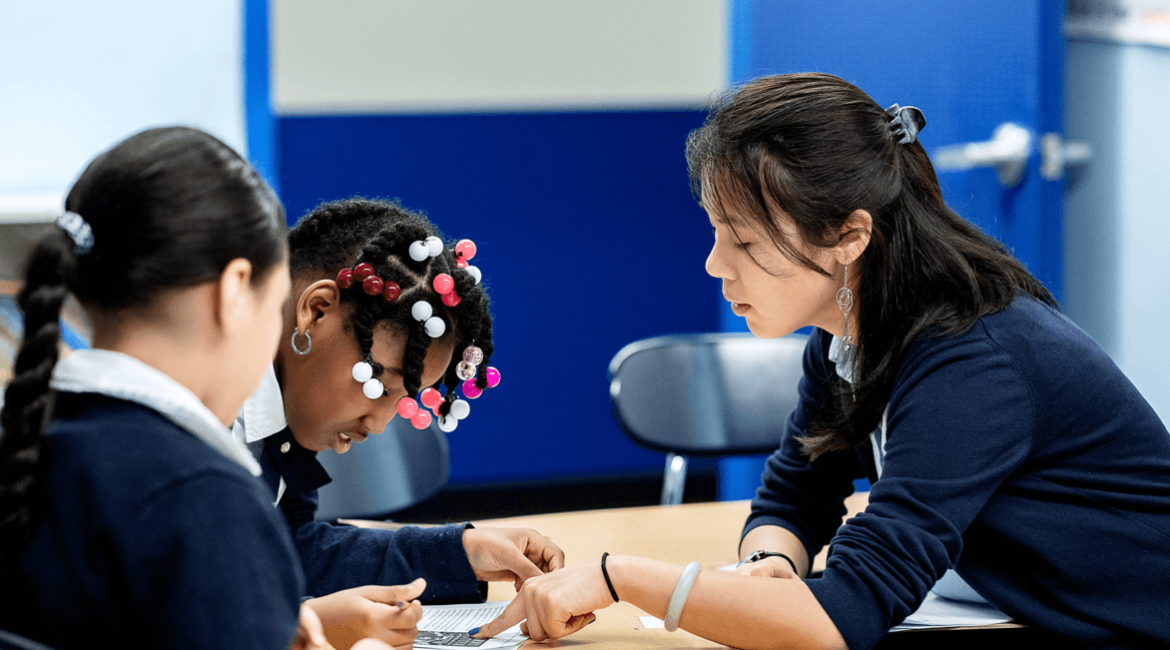When it is June and the weather is warm and the days are long, how will we determine whether 2019-2020 was a successful year in our classrooms? There are so many ways in which we can measure a successful school year including, academic mastery, year-over-year growth, socioemotional learning, memorable projects, and lasting relationships. But for all of these, it is fundamentally important that all scholars achieve success in a way we can measure and celebrate.
The task of ensuring all scholars in our classrooms are successful can feel daunting and defining success according to only certain measures of performance can seem limiting. Educators care deeply about all the scholars in their rooms but can feel pulled in so many directions working to support all scholars at once. It is perhaps the biggest stressor for many teachers and often the main conversation at any staff gathering. Are my strongest scholars challenged enough? Are there scholars who are struggling? Do I know what they’re struggling with? Do I know how to fix it?
Luckily, there are many ways to differentiate support and target scholars’ needs and individual goals in a way that reliably leads to growth. It is one of the areas that makes the craft of teaching excitingly complex and requires teachers to grow and develop throughout their careers. At Classical, one way we differentiate support is by prioritizing small group instruction throughout the day. We believe that different scholars learn concepts at different rates, or, in different contexts and that is okay. By creating systems that consistently create opportunities to work with scholars in groups of three to six, we are providing a unique opportunity to respond to classroom data, target scholars’ needs and make significant growth. Small group instruction is a powerful lever for improving scholar outcomes, but requires important logistical and strategic planning. Simply spending additional time on a concept or reviewing the same lesson again isn’t always effective. For small group instruction to work well, the intention must be specific, the schedule must allow for responsive support, and the measure of success must be predefined.
How to find the time and staff to teach small groups?
At the school level, there are some important logistics to consider if you want to increase the amount of small group opportunities available to scholars. The first of which is staffing. At Classical, we have a unique team structure in which there are one or two additional teachers on each grade team, which allows for scheduling flexibility. These additional teachers, called learning specialists, provide support across multiple classrooms. This model allows us to increase the number of sections offered for some core subjects and to strategically schedule teachers’ preparation blocks so that additional targeted small groups can be taught throughout the day. The learning specialists teach scholars in whole group and small group settings, which creates an important sense of shared responsibility for the success of scholars across all classrooms. With this model, the goal of supporting all scholars does not weigh only on the classroom teacher, but instead is shared across the team and supported through flexible groupings. Additionally, this position has proven to be an excellent way to train and develop new teachers. Rather than jumping into a full classroom on day one, this role allows new teachers to develop their craft and take on additional responsibility as they grow.
How to Determine Priorities for Small Group Instruction?
Once you have a structure in place that allows for flexible groupings, the deep dive begins! How do you best utilize the small group instruction model to maximize scholar achievement across the scholars in your grade? At Classical, we carefully analyze grade-wide data from reading, math, and running record assessments and qualitative data from scholar work on a monthly basis to create groupings of scholars who require remediation in specific skills or content areas. As this process can at times feel overwhelming – so many scholars and so much to learn – it is important to make strategic choices about what skills and which scholars to prioritize in a given month. This strategic decision making requires us to be very specific about the goals for each group and to put structures in place to ensure the precious time allotted to small group instruction is as high leverage as possible. To achieve a similar goal at your school setting, consider these three questions:
What Skills to Focus On?
Small group instruction at Classical can run from 20-45 minutes for three to six weeks. For this time to have a strong impact on scholar understanding and achievement, it is essential that the goals for the groups are clear and are transparently shared with staff and scholars. When determining which skills to target, consider whether the group will be providing the first exposure to the content, providing additional exposure to current content, remediating past content gaps, or, previewing upcoming challenging content.
Which Scholars Would Benefit the Most?
We believe that all scholars benefit from learning in a small setting with increased individualized support from their teacher. Each month, we need to determine who would most benefit from this opportunity. During some instructional blocks like guided reading, we are fortunate to be able to offer small group reading instruction to all scholars every day. But for other blocks, we need to select only a few individuals. The “who” is directly linked to deciding the “what.” By analyzing current and historically data, we can prioritize skills and determine which scholars are most in need of support. Our small group instruction model is not only used to support scholars who are struggling. Instead, small group instruction can also be used to push from “good to great” by targeting scholars with specific mastery gaps or by giving an extra push to scholars who struggle with work completion. If staffing allows, it is also a great opportunity to provide scholars with a “push assignment” to challenge scholars who have already demonstrated mastery.
How to Measure the Impact?
Prioritizing small group instruction requires delegating staffing resources and carving out time in a busy school day. Given this level of commitment, it is important to determine how to carefully measure the group’s impact on scholar achievement. This will ensure the instructional time is as targeted as possible and will provide valuable data to inform upcoming groupings decisions. Scholars’ growth could be measured through a comparative analysis of the scholars’ overall average on classroom assessments, by analyzing specific questions aligned to the group’s goals from past or upcoming assessments, or through the analyses of specific work products created during the group. Determining the metric for success during the planning stage will help make the instructional takeaways clear for teachers and scholars.
As we work toward the ultimate goal of ensuring all scholars in our classrooms have successfully mastered this year’s content and maximized their individual growth, Classical will continue to lean on our small group model to provide scholars with as much targeted and individualized support as possible. Small group instruction is certainly not the only tool for ensuring all scholars succeed, but it provides a unique opportunity to flexibly target instruction tailored to scholars’ individual needs. If you’re looking to expand the methods of support at your school, we encourage you to consider small group instruction. With some strategic planning and intentional goals, it could be just what you and your scholars need to achieve rapid academic growth.

This post was contributed by Ms. Rebecca Scognamiglio, a School Director at Classical Charter Schools. As a non-CMO charter network, we rely on the thoughts, opinions, and innovations of our staff to move our mission forward and provide an excellent academic option to families in the South Bronx. To hear more from our staff, check out the next post! Or, click here to learn more.


